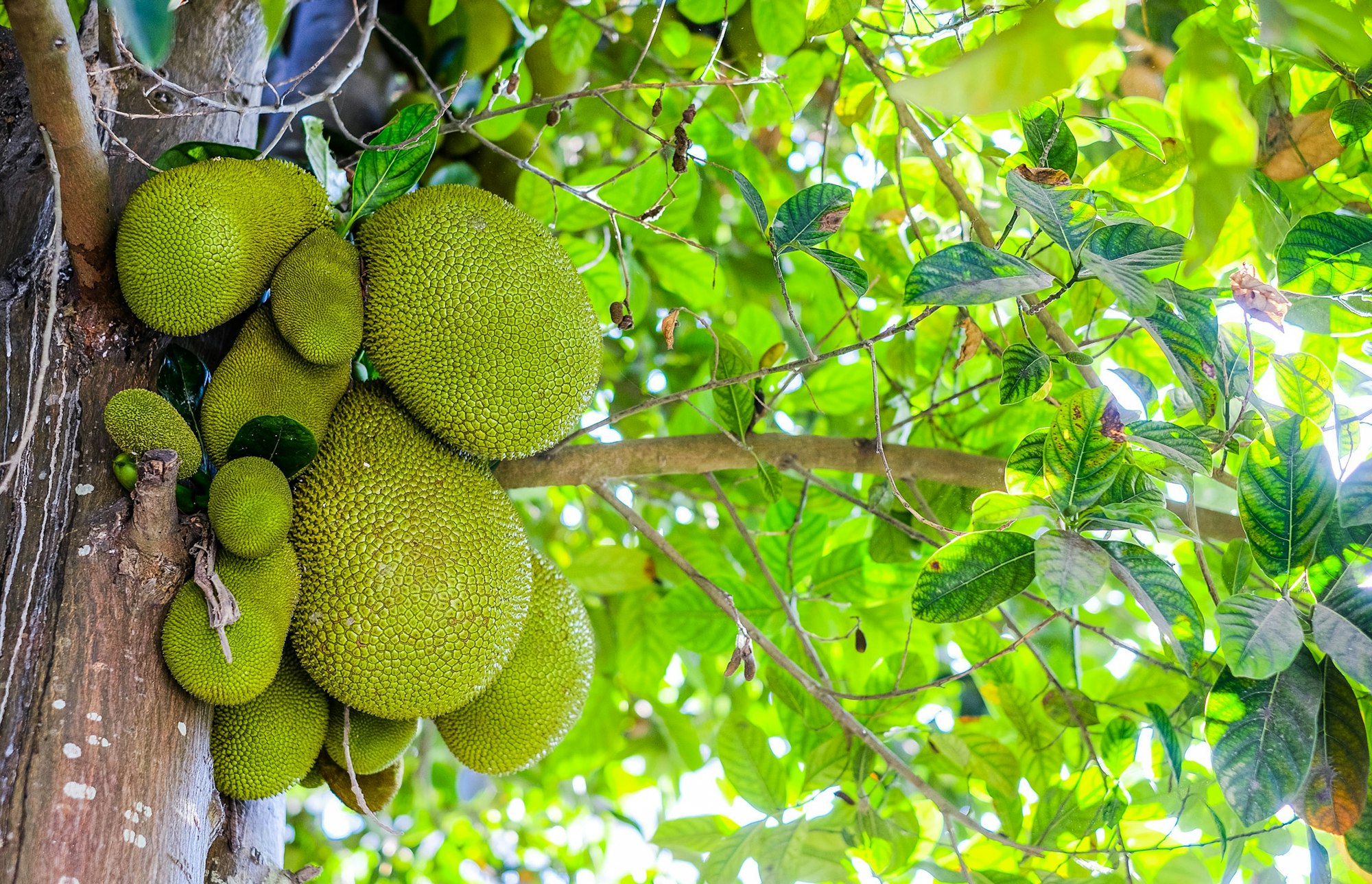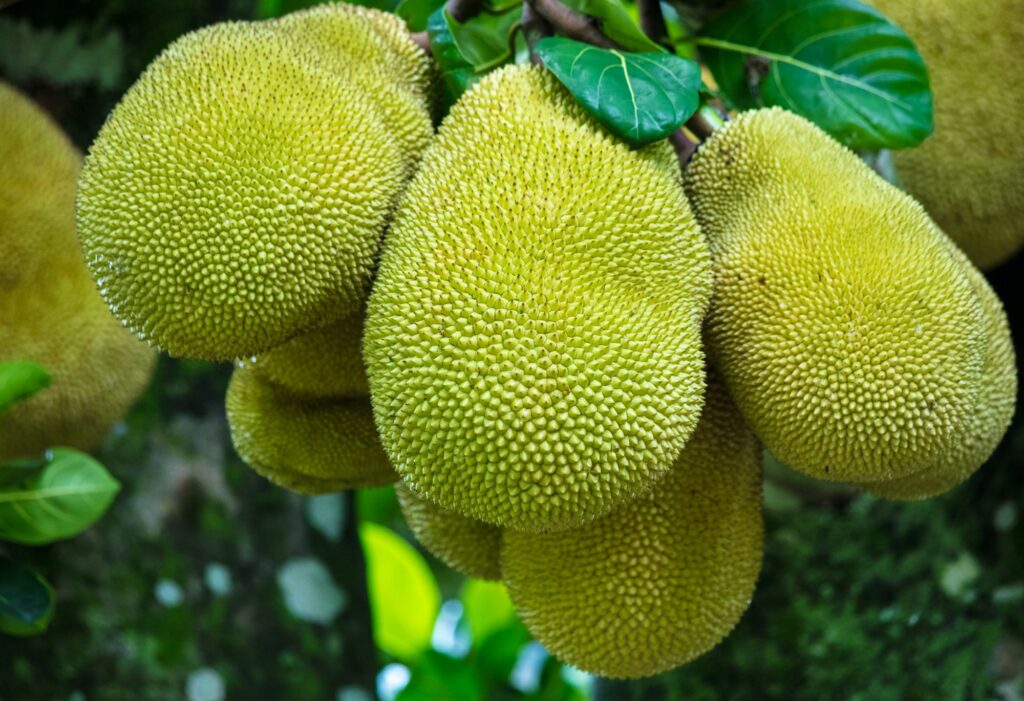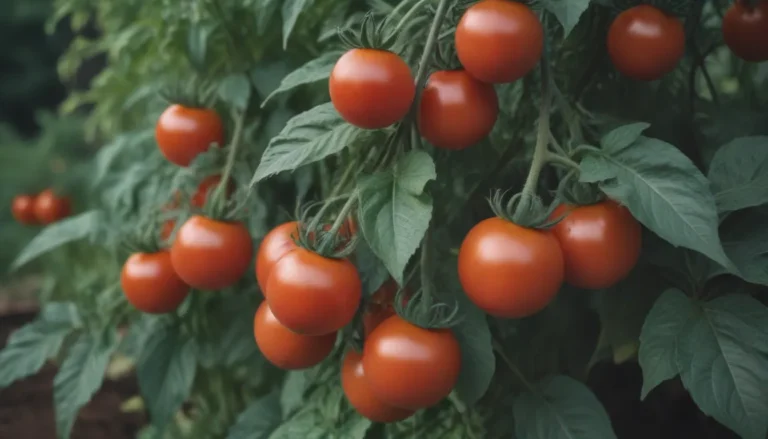Guide to Growing and Caring for Jackfruit Trees: From Seed to Harvest

Have you ever tasted the sweet, tropical flavor of jackfruit and wondered if you could grow your own tree? Whether you’re a seasoned gardener or a curious beginner, this guide will walk you through everything you need to know about cultivating and nurturing jackfruit trees. We’ll cover everything from planting seeds to harvesting your first fruit. So, let’s dive into the fascinating world of jackfruit cultivation!
What is Jackfruit?
Before we get our hands dirty, let’s take a moment to appreciate the star of our show – the jackfruit.
Artocarpus heterophyllus, commonly known as jackfruit, is a species of tree in the fig, mulberry, and breadfruit family. Native to South and Southeast Asia, this tropical fruit has been gaining popularity worldwide for its versatility and nutritional benefits.
Fun fact: Jackfruit is the largest tree-borne fruit in the world, with some specimens weighing up to 55 kg (120 pounds)!

Key Characteristics:
- Size: Mature trees can reach heights of 9-21 meters (30-70 feet)
- Leaves: Large, glossy, and oval-shaped
- Fruit: Large, oblong, with a spiky exterior and yellow flesh when ripe
- Climate: Thrives in tropical and subtropical regions
Why Grow Jackfruit Trees?
Growing your own jackfruit tree can be a rewarding experience for several reasons:
- Delicious Fruit: Enjoy fresh, homegrown jackfruit right from your backyard.
- Versatility: Use jackfruit in both sweet and savory dishes, or as a meat substitute.
- Nutritional Value: Rich in vitamins, minerals, and fiber.
- Shade: Mature trees provide excellent shade for your garden.
- Sustainability: Reduce your carbon footprint by growing your own food.
Now that we’ve covered the basics, let’s get into the nitty-gritty of growing and caring for jackfruit trees.
Choosing the Right Location
The first step in successfully growing a jackfruit tree is selecting the perfect spot. Here’s what you need to consider:
Climate
Jackfruit trees thrive in tropical and subtropical climates. They prefer:
- Temperature: 70-80°F (21-27°C)
- Humidity: High humidity levels
- USDA Hardiness Zones: 10-12
If you live in a cooler climate, don’t worry! You can still grow jackfruit trees in containers and move them indoors during colder months.
Sunlight
Jackfruit trees love the sun! Ensure your chosen location receives:
- Full sun: At least 6-8 hours of direct sunlight daily
Soil Requirements
The right soil can make all the difference in your jackfruit tree’s growth. Aim for:
- Well-draining soil: Sandy loam or loamy soil is ideal
- pH level: Slightly acidic to neutral (pH 6.0-7.5)
- Rich in organic matter: Add compost or well-rotted manure to improve soil quality
Space
Remember, jackfruit trees can grow quite large. Ensure you have enough space:
- Minimum spacing: 30-40 feet (9-12 meters) between trees
- Clearance: Keep away from buildings, power lines, and other structures
Planting Your Jackfruit Tree
Now that you’ve chosen the perfect spot, it’s time to plant your jackfruit tree. You have two options: starting from seed or using a young sapling.
Starting from Seed
Growing from seed can be a fun and rewarding process. Here’s how to do it:
- Select fresh seeds: Use seeds from a ripe jackfruit, ideally within 1-2 weeks of extraction.
- Clean the seeds: Remove any fruit pulp and wash them thoroughly.
- Soak the seeds: Place them in water for 24 hours to soften the seed coat.
- Prepare containers: Use 6-inch pots filled with well-draining potting mix.
- Plant the seeds: Sow them about 1/2 inch deep, with the wider end down.
- Provide warmth and moisture: Keep the soil moist and maintain a temperature around 70-80°F (21-27°C).
- Wait for germination: Seeds usually sprout within 3-8 weeks.
Planting a Young Sapling
If you’re starting with a young tree from a nursery, follow these steps:
- Dig a hole: Make it twice as wide and deep as the root ball.
- Amend the soil: Mix in compost or well-rotted manure.
- Place the tree: Set it in the hole at the same depth it was growing in the container.
- Backfill: Fill in with soil, tamping gently to remove air pockets.
- Water thoroughly: Give your newly planted tree a good drink.
- Mulch: Apply a 2-3 inch layer of organic mulch around the base, keeping it away from the trunk.
Caring for Your Jackfruit Tree
Congratulations! You’ve successfully planted your jackfruit tree. Now, let’s ensure it grows healthy and strong with proper care.
Watering
Proper watering is crucial for jackfruit trees, especially during their first few years.
- Young trees: Water deeply 2-3 times a week
- Established trees: Water once a week, or when the top 2 inches of soil feel dry
- Tip: Avoid overwatering, as it can lead to root rot
Fertilizing
Jackfruit trees benefit from regular fertilization to promote healthy growth and fruit production.
- Frequency: Apply fertilizer 3-4 times a year
- Type: Use a balanced, slow-release fertilizer (e.g., 10-10-10 NPK)
- Application: Spread fertilizer evenly around the drip line of the tree
- Organic options: Compost, well-rotted manure, or fish emulsion
Pruning
While jackfruit trees don’t require heavy pruning, some maintenance can improve their health and fruit production.
- Remove dead or diseased branches: This promotes overall tree health
- Shape young trees: Encourage a strong central leader
- Thin out crowded branches: Improve air circulation and sunlight penetration
- Timing: Prune after fruit harvest or during the dormant season
Pest and Disease Management
Jackfruit trees are generally hardy, but they can still face some challenges. Here are some common issues and how to address them:
Pests
- Fruit flies
- Prevention: Use fruit fly traps or cover developing fruit with bags
- Treatment: Apply neem oil or insecticidal soap
- Mealybugs
- Prevention: Maintain tree health and encourage beneficial insects
- Treatment: Use a cotton swab dipped in rubbing alcohol to remove them
- Scale insects
- Prevention: Regular inspection and pruning of affected areas
- Treatment: Apply horticultural oil or insecticidal soap
Diseases
- Root rot
- Prevention: Ensure proper drainage and avoid overwatering
- Treatment: Improve soil drainage and reduce watering frequency
- Anthracnose
- Prevention: Maintain good air circulation through pruning
- Treatment: Apply a copper-based fungicide
- Leaf spot
- Prevention: Remove fallen leaves and maintain tree hygiene
- Treatment: Apply a fungicide and improve air circulation
Remember, prevention is always better than cure. Regular inspection and maintenance can help catch issues early.
Harvesting Your Jackfruit
After all your hard work, it’s time for the most exciting part – harvesting your jackfruit!
When to Harvest
Jackfruit typically takes 3-8 months to mature after flowering. Look for these signs of ripeness:
- Color change: The fruit turns from green to yellow-brown
- Aroma: A sweet fragrance develops
- Sound: When tapped, ripe fruit produces a hollow sound
- Spines: They become wider and flatter
How to Harvest
Harvesting jackfruit requires some care due to its size and sticky sap. Follow these steps:
- Wear gloves: Protect your hands from the sticky latex sap
- Use a sharp knife: Cut the stem about 4-6 inches from the fruit
- Support the fruit: Have someone help you catch the fruit as you cut
- Allow to ripen: If harvested slightly early, let the fruit ripen at room temperature for a few days
Storing and Using Your Jackfruit
Now that you’ve harvested your jackfruit, here’s how to store and use it:
Storage
- Whole fruit: Can be stored at room temperature for up to 6 days
- Cut fruit: Refrigerate in an airtight container for up to 5-6 days
- Long-term storage: Freeze cut pieces for up to 2 months
Using Jackfruit
Jackfruit is incredibly versatile. Here are some ideas:
- Fresh consumption: Enjoy the sweet, ripe fruit as is
- Cooking: Use unripe jackfruit as a meat substitute in savory dishes
- Desserts: Add ripe jackfruit to smoothies, ice cream, or baked goods
- Preservation: Make jackfruit jam or dry the seeds for later use
Troubleshooting Common Issues
Even with the best care, you might encounter some challenges. Here are solutions to common problems:
- Slow growth: Ensure adequate sunlight, water, and nutrients
- Yellowing leaves: Check for overwatering or nutrient deficiencies
- Fruit drop: This is normal to some extent, but excessive drop might indicate stress or lack of pollination
- No fruit production: Patience is key – trees may take 3-8 years to begin fruiting
Conclusion
Growing a jackfruit tree can be rewarding and culminates in delicious, homegrown fruit. With proper care and attention, your jackfruit tree can thrive and become a beautiful, productive addition to your garden or orchard.
Remember, every tree is unique, and it may take some time to understand your jackfruit tree’s specific needs. Don’t be discouraged if you face challenges – gardening is a learning process, and each season brings new opportunities for growth and improvement.
We hope this guide has inspired you to start your jackfruit-growing adventure. Happy planting, and may your future be filled with bountiful jackfruit harvests!





